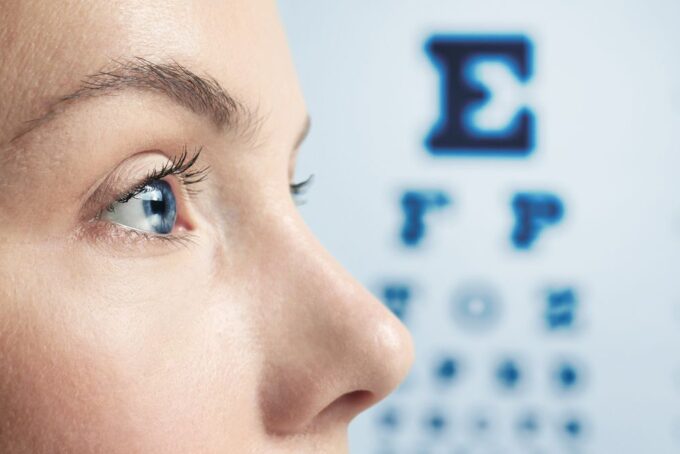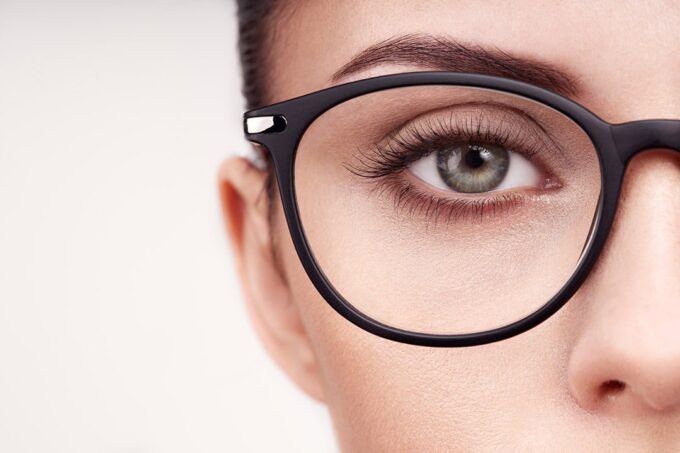Suffering from diseases and conditions is never easy, particularly when the patients do not fully understand the problem they are experiencing. Sadly, there are so many illnesses out there that it is hard to keep track of them all. Before treatments can start and before a patient takes the first step towards being fully healthy, there needs to be the right diagnosis and a step by step approach. One of the areas people know little about is the eye, particularly problems that interfere with the vision. In this article we will talk about keratoconus and focus on the most effective solutions for patients suffering from it. For more information regarding ophthalmology and eye hospitals in general, read on to learn more about this and be sure to check out https://www.medical-solutions-bcn.com/en/ophthalmology-eye-hospital-barcelona-spain/
What Is It?

Source: choateeye.com
Keratoconus is a condition that occurs then the cornea of the eye, which is clear dome-like front surface, becomes thinner. Following the thinning, it also bulges outwards and takes a cone shape. Once the cone-shape appears, it causes blurred vision as well as sensitivity to glare and light. It is a difficult problem to deal with but not a very serious state. In most cases both eyes are affected, but eye can be affected more than the other. Most of the patients who suffer from keratoconus are aged between 10 and 25, but they can also be longer. The condition progresses slower with younger age, but it can also last longer.
The Usual Treatment
Early stages of keratoconus are usually treated with glasses and soft contact lenses, but only if the condition is caught on time. If some time has already passed before the patient seeks assistance, more rigid contact lenses are needed, as well as scleral lenses in some cases. The worst case scenario usually includes a full cornea transplant which is a delicate surgery patients want to escape. With the advances in medicine, new treatments are being developed too. One such treatment is collagen cross-linking. It is capable of slowing down or completely stopping keratoconus from progressing any further. It can prevent the eventual need for the cornea transplant too, making it a very useful treatment.
Symptoms

Source: healthline.com
As mentioned, the earliest stages of keratoconus cause blurred vision. However, as it progresses, the symptoms also get more serious. Vision can be distorted, the sensitivity to bright light is more pronounced, and night driving or even walking becomes problematic because of glare. Many patients experience the need for more frequent eyeglass or lenses prescription changes. If left untreated for too long, symptoms include sudden worsening, most notably clouding of vision.
The best time to visit your ophthalmologist would be when the eyesight starts to worsen more rapidly. This is caused by irregular curvature of the eye, also called astigmatism, where glares and bright light interfere with normal eyesight. Routine eye exams can also identify keratoconus so be sure to visit your doctor regularly. You can ask them to perform a more thorough examination if your vision is somehow distorted and you suspect that keratoconus may be the cause of it.
Causes
Speaking of causes, this condition is somewhat of a mystery because it is now known exactly what causes it. Genetics and environmental factors have a lot to do with it, similar to other eye problems, but other than that nothing has been confirmed. According to statistics, 10% of keratoconus patients have a parent who also experienced this condition when they were younger. Life choices and habits could also be guilty for this problem being easier or harder to deal with, especially now with more and more screens and bright lights around us. It would be smart for the children of parents who have experienced keratoconus in their youth to pay attention to how much they care about their eyes. Prevention is always better than finding a solution.
Therapies, Solutions, Remedies

Source: uponbeauty.com
Treatment depends on the severity of the situation and it is different from patient to patient. However, there are basically two different approaches to go with. The doctors either attempt to slow further progression, or try to improve the patient’s vision. The aforementioned corneal cross-linking is used when the condition is still progressing. It is a new treatment and it works wonders, preventing the need for corneal transplants and other serious states. However, it does not or cannot reverse keratoconus nor improve the vision of the patient.
Improving of the vision also depends on the severity, with mild to moderate states being treated with glasses or lenses. More often than not, this treatment lasts long particularly when the cornea is finally stable and the problem stops progressing. Prolonged periods of wearing glasses and lenses is usually what patients have to deal with when they are finally free of keratoconus.
When it comes to what kind of lenses are worn, it again depends on the severity and the stage of the problems. Eyeglasses or soft lenses are used to correct distorted and blurry vision in early stages. Hard lenses, also called gas permeable, are the next step with more advanced keratoconus. Piggyback lenses are used when hard lenses are too uncomfortable, as they go over soft ones. Hybrid lenses have rigid centers and softer rings, and are used when harder types are extremely uncomfortable. Finally, scleral lenses are the solution when there are irregular cornea changes during advanced keratoconus stages. They do not touch the cornea, but rest on the sclera (the white part of the eye).
We talked about the corneal collagen cross-linking already, but now we go deeper into the matter. During this advanced new procedure, the cornea is fed with riboflavin eye drops and treated with UV light. This combination makes it stiffer and prevents further changes in shape. It is great with vision loss prevention as it stabilizes the cornea in early stage of the disease. If this is not an option, surgery is the last resort. Either keratoplasty penetration or deep anterior lamellar keratoplasty are done. The former is performed when there is corneal scarring or extreme thinning and the cornea is transplanted. The latter procedure aims to preserve the inside lining, meaning it is not a full transplant.







